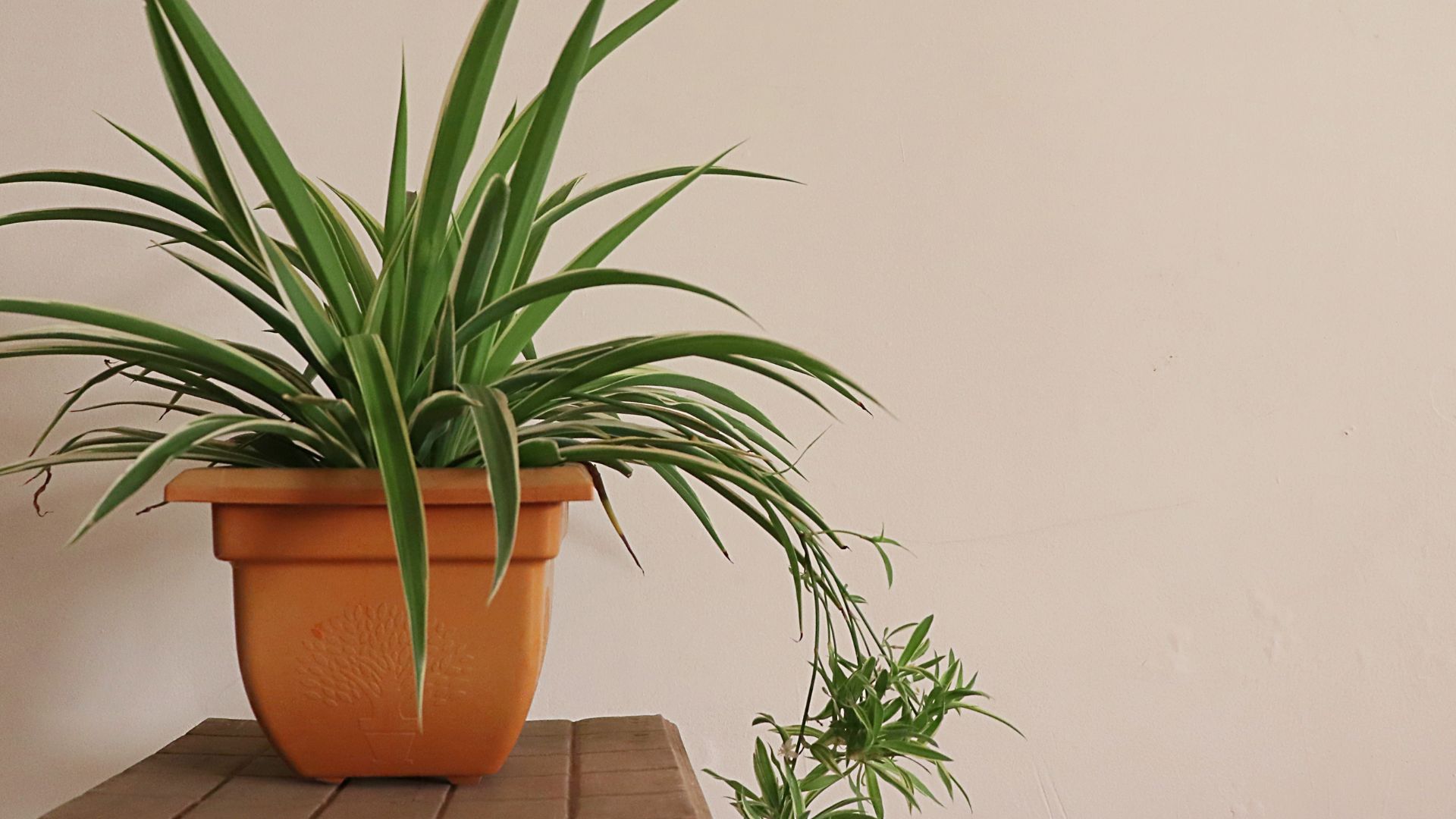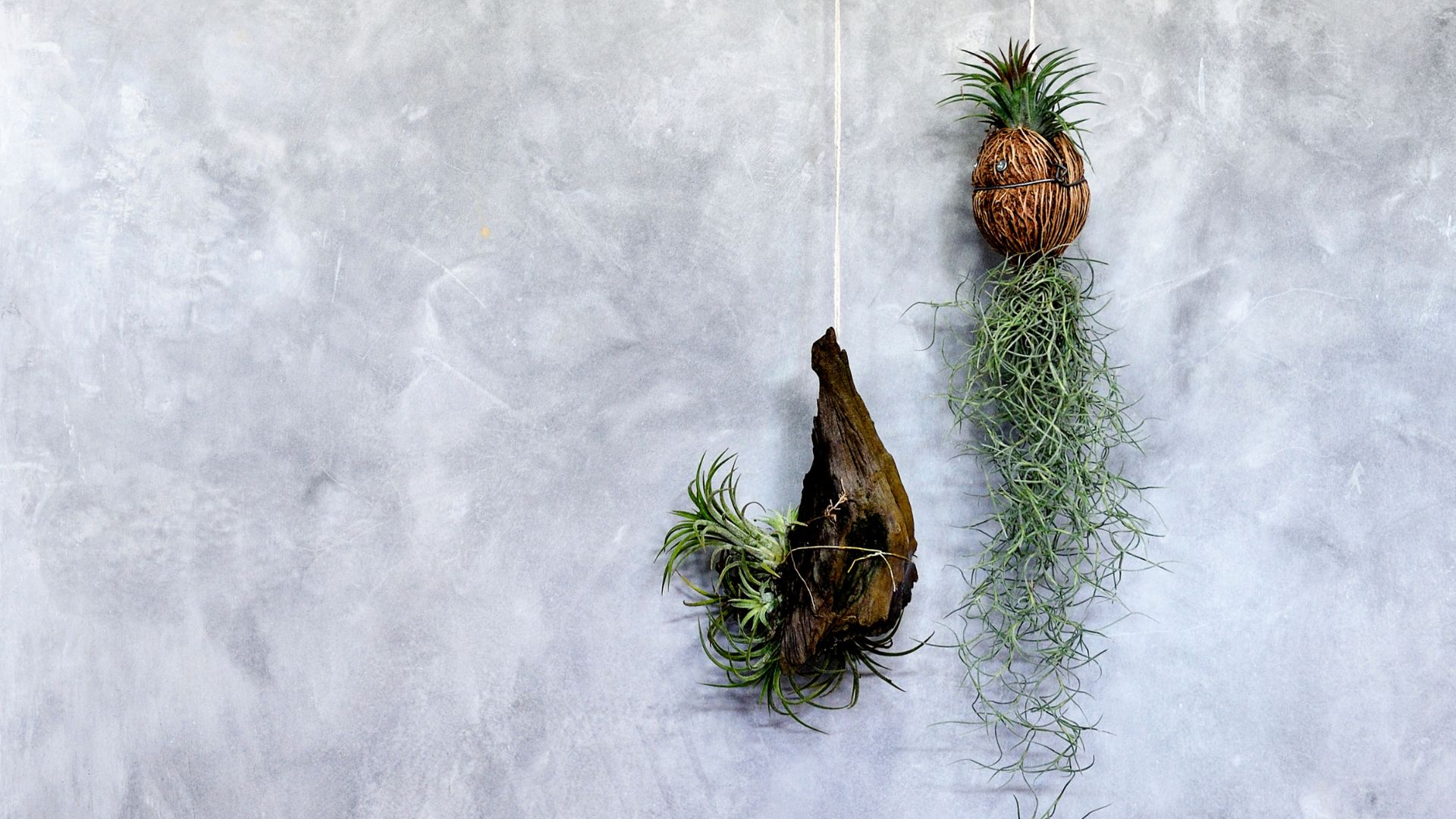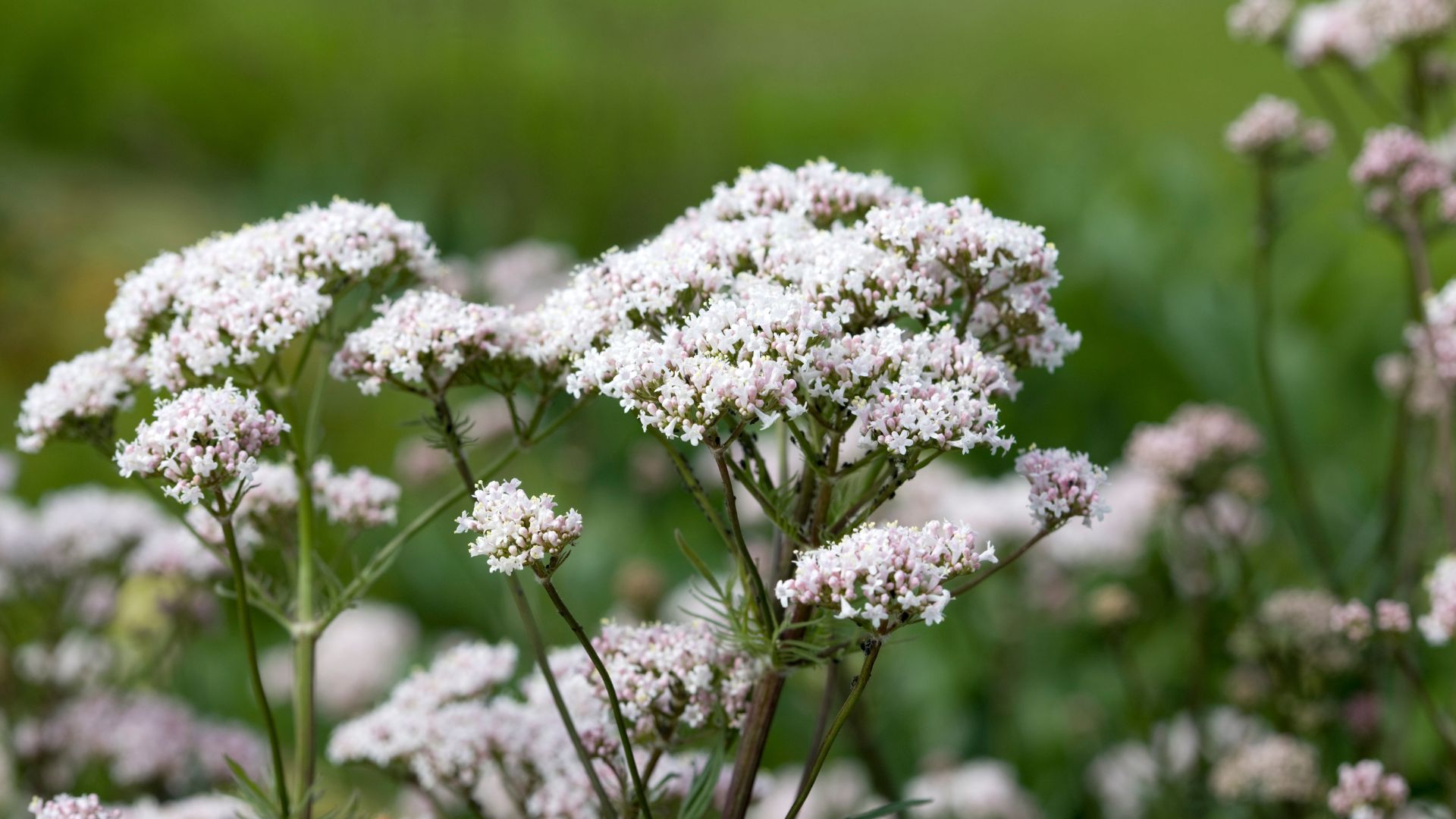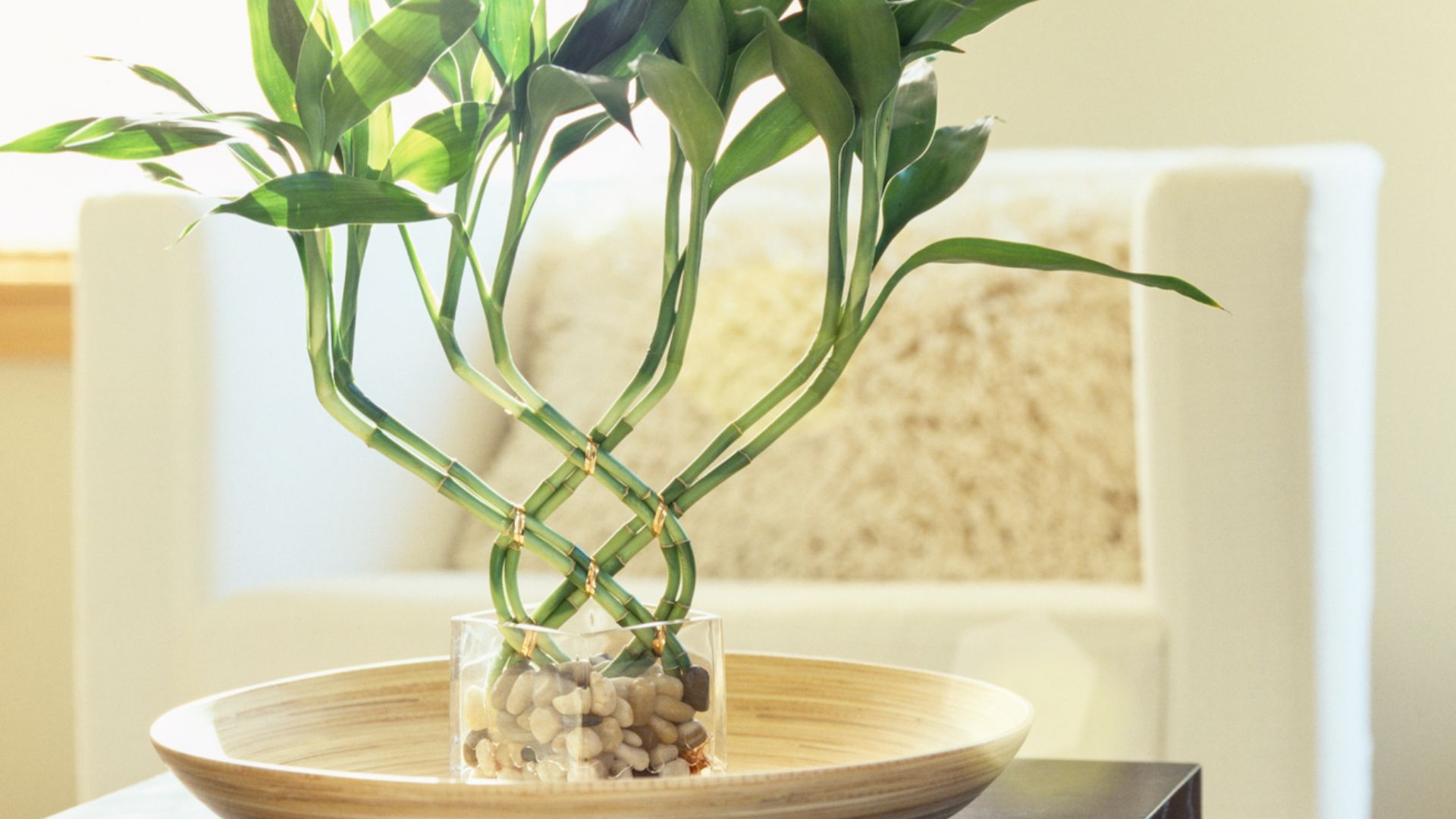The best indoor plants for your health and wellbeing, from mould-busting houseplants to aromatic herbs
Vibrant foliage, aromatic herbs, and intriguing blooms to enhance your home and wellbeing


There’s no easier way to bring life and energy into your home than with a houseplant.
They not only look incredible and can help boost your mood but they’re such an easy way to transform your kitchen, bedroom, or living room on a budget.
From hanging grasses that release oxygen at night and gorgeously scented herbs that’ll liven up your favourite dishes, to creepers that amazingly can help remove toxins and mould from your rooms, these are the best indoor plants to boost your health, well-being, and sleep quality almost instantly.
The best indoor plants for your health and wellbeing
Spider plant (Chlorophytum comosum)

According to the family-run traditional plant nursery, Wyaston Nursery spider plants are one of the easiest ways to clean the air in your home. These gorgeous perennial flowering plants love humidity and light (as long as it’s not direct sunlight) so are best placed in a bathroom where they’ll thrive, in turn giving off oxygen each and every night. Filtering benzene, formaldehyde, and carbon monoxide from the air, these miracle plants are also pretty easy to care for too, requiring just a light water every few weeks. Sit back and let them work their magic.
Variegatum Spider Plant Indoor Chlorophytum Comosum Houseplant (12cm Pot), £14.98 | Amazon
The perfect addition for all types of living spaces, these low-maintenance plants are the perfect addition to any home.
String of Pearls (Senecio rowleyanus)

This creeping succulent vine, with its almost spherical leaves, really does look like a string of pearls and looks best suspended from a small hanging basket or gorgeous macrame plant hanger in any bright room. Hailing from South Africa these delicate plants remove toxins from the air and are also seen as symbols of good luck.
Snake Plant (Dracaena trifasciata)

Extremely low maintenance and incredibly pleasing to the eye, the snake plant, otherwise known as Mother-in-Law Tongue is one of the easiest house plants to care for. Like most of the plants on this list, the snake plant doesn’t like to be over-watered so if you forget to do it now and again, it’ll still thrive. The sword-like leaves with their bold tones of bright yellow and mottled green have numerous health benefits including filtering indoor air and removing toxins, and have also been shown to improve productivity and concentration.
Peace Lily (Spathiphyllum wallisii)

The wonderfully named Peace Lily features one of the most curious flowers. The white part of the plant is actually a bract, kind of like a bright white protective leaf and the tiny flowers sit inside on the upright spadix. Not only does it look incredibly calming the plant helps to remove mould spores from the air and purifies the air.
Sign up to our free daily email for the latest royal and entertainment news, interesting opinion, expert advice on styling and beauty trends, and no-nonsense guides to the health and wellness questions you want answered.
Wondering why your Peace Lily tips are turning brown? That’s perhaps down to too much direct sunlight so try moving your health-giving plant to a different spot in your home, and snip off the brown parts to bring it back to its best.
Aloe Vera (Aloe barbadensis miller)

Chances are you know all about Aloe Vera if you’ve ever suffered from sunburn as its gel is one of the best ways to reduce skin redness. But did you know the plump jagged spikes also help to purify the air in your home? Add one to your bedroom or home office to really reap the benefits. You can even snap off one of the leaves and use the gel inside directly on your skin as a moisturising mask, be sure to wash it off after about 10 minutes though.
Rosemary (Salvia rosmarinus)

An easy way to make your kitchen smell good is by adding a few aromatic rosemary plants to your windowsill. The fragrant bushy herb is fairly hardy and has endless health benefits when eaten, some of which are said to include reducing head and stomachaches. Sprinkle the green sprigs over potatoes before roasting or add to casseroles and stews for an instant flavour and health boost.
Eucalyptus (Eucalyptus globulus)

While these silvery green trees are not typically known as house plants, they can be grown inside provided they’re near a bright, sunny window and a fairly warm spot. The energising scent is said to aid relaxation and sleep but the best way to reap the benefit of Eucalyptus is by cutting off a few branches and hanging them under the running water of your shower, when the hot water hits the sprigs the aroma is intensified providing a sense of alertness and mental clarity, in turn boosting energy levels.
English Ivy (Hedera helix)

Common Ivy or English Ivy is incredibly easy to grow indoors, providing an expanse of trailing leaves that works well on shelves. The light-loving plant won’t do well in darker rooms and enjoys moist but not overly wet soil. When thriving, the plants will benefit your health by reducing mould in your home, improving air quality, and reducing carbon monoxide. However, a word of warning, the Ivy’s leaves and berries are toxic so if you have small children or pets it’s perhaps one to avoid inside the house.
Lavender (Lavandula)

Placed on a sunny window lavender is one of the best fragrant plants to have in your home. The unmistakable scent alone works wonders in promoting restful, deep sleep and it’s thought to also provide relief from headaches and even stress and depression. According to Wyaston Nursery, “lavender world best in sunny spots and should be planted in well-draining soil. Trim any woody, brown, or old stems to encourage new growth.”
Air Plants (Tillandsia)

You might be familiar with these eccentric little evergreen plants if you’ve ever travelled through Mexico, the Caribbean, or Argentina (one of the easiest countries to work abroad from) where the dainty colourful plants thrive in forests, mountains, and deserts, often attached to other, larger plants and trees. But you can easily buy these spiky plants in the UK too where they’ll blend into your home seamlessly, especially when housed in a dainty open terrarium. As well as adding a certain edge to your rooms the plants are natural air purifiers helping to remove airborne chemicals from your home.
Jasmin (Genus jasminum)

While typically known as an outdoor plant, it seems a shame not to bring the incredibly scented flowers indoors. Pink and Arabian jasmine varieties work particularly well inside and will thrive in brightly lit sunny areas of your home. The pretty white blooms give off a delightful fragrance (at its height in mornings and evenings) that’s said to help ease symptoms of anxiety and stress.
Bird’s Nest Fern (Asplenium nidus)

With its wavy foliage and bird nest appearance, this bright green fern will certainly add interest to any room. This particular variety enjoys bright spaces away from direct sunlight which can scorch the leaves and mildly wet environment so could work in a bright, airy bathroom. Incredibly, Bird’s Nest Ferns can help lower temperatures and increase relative humidity but they also work to filter pollutants out of the air, especially those like formaldehyde, toluene, and trichloroethylene which are commonly found in indoor air.
Rubber Fig (Ficus elastica)

In symbolism, Rubber Plants represent happiness and abundance and should be placed in room corners where the plant's shiny round leaves help to soften sharp angles. But more generally, like a lot of health-boosting indoor plants, the Rubber Fig can help reduce asthma and inflammation since the plant helps to release moisture, which increases humidity levels indoors. And the gorgeous leaves don’t only appeal visually but can help trap pollen and dust in your home, in turn, reducing indoor allergies. It’s pretty much the dream plant.
Philodendron Pink Princess (Philodendron erubescens)

A great detoxifier for any home, the expensive and rare Philodendron Pink Princess lends itself to last year's quiet luxury interior trend. The heart-shaped leaves splashed with vibrant contrasting pink variegation ensure it stands out whatever your decor style. What's more, Philodendron's pretty leaves are great at absorbing carbon dioxide and other toxins from the air.
Basil (Ocimum basilicum)

Indoor basil plants love to be kept warm so your kitchen is the ideal place to store it - but make sure the delicate plant is kept out of the midday sun as it wilts and burns easily. If cared for properly, a basil plant can live for numerous years, ensuring you’ll always have a supply of aromatic leaves on hand for livening up your traditional Italian dishes. The fragrant herb’s delicate leaves are best torn by hand, rather than chopped with a knife and can be consumed in moderation every day. The health benefits of basil are endless with its antibacterial and antioxidant properties working wonders for skin and digestive issues.
Parlour Palm (Chamaedorea elegans)

These elegant leafy plants, native to Southern Mexico and Guatemala are one of the most popular houseplants in the world since they look fabulous in any room and are pet-friendly. The leafy fronds work to purify stale air and remove harmful toxins.
Valerian (Valeriana officinalis)

With plenty of sunlight, the useful Valerian herb can thrive indoors providing an endless stream of pale pink flowers that are in fact edible and said to help with insomnia and anxiety. In recent studies, it was shown that valerian root helped reduce menopausal hot flashes, but rather than dig up your houseplant why not consider Valerian Herbal supplements.
Chives (Allium schoenoprasum)

Chives grow extremely well in pots and are best placed in bright sunny locations in the kitchen. The bulbous perennial, related to the garlic and onion family adds a delicate flavour to dishes and a vibrant smattering of colour. But that’s not all, they also improve the immune system and boost bone health thanks to being rich in Vitamins C and K.
Devils Ivy (Epipremnum aureum)

Native to the Soloman Islands, the fantastically named Devil’s Ivy is one of the best air-purifying plants to have in your home. But this one is best avoided if you have children in or visiting your home as the leaves can be toxic when chewed or swallowed.
Lemon Tree (Citrus limon)

While you can’t grow lemon trees outside during winter in the UK, they love warm, balmy climates so you can grow a lemon tree in a pot indoors as long as you have a sunny conservatory or covered warm porch area. And with patience, you can even grow your own from a pip. It’ll take around three to five years for your plant to bear fruit but the health benefits are endless. As well as livening up tap water, lemons are a great source of vitamin C and essential minerals like magnesium, calcium, and potassium.
Orchid (Orchidaceae)

As beautiful as orchids are, many people shun the standout blooms since they can be notoriously tricky to look after, but caring for orchids needn’t be a chore, with the right amount of water, correct pruning and the perfect home temperature your orchids can thrive year after year. Aside from glacier regions, orchids hail from all over the globe with some of the most incredible rare variations being found in Malaysia and Borneo. As well as improving air quality, the flower has a reputation as a healer of fever and has been used in Chinese Medicine for centuries.
Staghorn Fern (Platycerium)

Billed as nature’s own air purifier, the Staghorn Fern certainly stands out as one of the most impressive plants in the fern family. Slightly reminiscent of seaweed leaves, the staghorn looks best suspended from a hanging pot, lending itself to bathrooms since they absorb water through their fronds.
Thyme (Thymus vulgaris)

Antiseptic, antioxidant, antiviral, anti-inflammatory: the healing properties of this medicinal plant are endless, which is why adding one to your kitchen windowsill is a smart move. The fragrant herb with beautifully aromatic leaves loves the warmth and thrives in dry conditions. Add the tiny leaves to meaty pies, roasted potatoes, and mushroom dishes.
Swiss Cheese Plant (Monstera deliciosa)

One of the most popular indoor plants thanks to its gorgeous glossy heart-shaped leaves, the Monstera thrives in bright sunny spots, but away from direct sunlight. You only need to water your plant about once every 11 days, sometimes less as it prefers fairly dry, well-drained soil. The Swiss Cheese aids sufferers of respiratory problems that are aggravated by dry air as the clever plant adds humidity to any environment.
Umbrella Plant (Cyperus alternifolius)

Place your Umbrella Plant in a large pot in a bathroom where it will happily provide a pop of greenery to your space as well as absorb pollutants from the air. This all-rounder features robust leaves and if you’re very lucky may even flower, but it’s quite rare in indoor varieties.
Mint (Mentha piperita)

Added to hot water, fresh mint leaves are a true delight, not only soothing indigestion but also alleviating stress and improving brain function, it really is a wonder herb. Like many houseplants, the key to growing mint inside successfully is light and warmth without too much direct sunlight. With regular pruning and removal of dead leaves, mint can last for years, especially if you repot it in fresh compost every couple of years.
Lucky Bamboo (Dracaena sanderiana)

These miniature eye-catching bamboo plants look great inside, especially in hallways or entranceways. The amount of stalks you have corresponds to a different meaning, for example, in Chinese tradition, five stalks represents power and balance, whereas two symbolises luck in love - so choose your plant carefully. As a great natural air purifier the only downside is that the plant is toxic to animals. One to avoid if you have pets.
Oyster Plant (Tradescantia spathacea)

Oyster Plants thrive in well-drained sunny spots out of direct sunlight. The tropical plant has been historically used to treat colds and sore throats with its common name coming from the fact that it apparently tastes like oysters.
Cactus (Cactaceae)

Many studies have shown that the humble house cactus can lower feelings of stress, anxiety, and restlessness through air purification as well as reducing levels of some home pollutants like benzene and nitrogen dioxide. And with so many varieties to choose from, from rat tail to old lady cactus you’ll be spoilt for choice.
Oregano (Origanum vulgare)

As part of the mint family, Oregano is remarkable in its ability to eliminate free radicals from the body and can be easily added to a myriad of recipes, working particularly well in Greek dishes. It’s also very easy to grow indoors, simply plant it in fast-draining compost and place it in your sunniest spot.
Chrysanthemum (Chrysanthemum morifolium)

These nostalgia-inducing plants with their retro-style blooms prefer cooler indoor spots well out of direct sunlight. As well as looking truly adorable Chrysanthemums have been used to treat all kinds of afflictions, from high blood pressure to fever and dizziness thanks to the plant's high levels of Potassium.
Cretan Brake Fern (Pteris cretica)

A great plant to have indoors since it reduces stress through its ability to purify the air. Placed in a moist atmosphere (bathrooms are ideal) the Cretan Brake Fern is easy to care for and works well in a hanging pot or even in a terrarium. The only downside is that this variety of fern is particularly susceptible to insects.
Jade Plant (Crassula ovata)

Avoid putting your Jade Plant in a bathroom or bedroom as according to Feng Shui the plant's positive energy will be reduced. Regardless of whether you believe in the ancient Chinese practice or not, Jade Plants are undeniably attractive, adding interest to any space. Even more appealing is the fact they produce a lot of oxygen at night, reduce CO2, and have even been used to treat wounds in some regions.

Lydia is a nomadic travel writer and solo travel expert with two decades of journalistic experience (including a nine-year stint as a fashion and beauty editor and five as a lifestyle director).
An intrepid explorer, Lydia writes about her adventures for The Sunday Times, Condé Nast Traveler, The Guardian, BBC Travel, Harper's Bazaar, ELLE, Marie Claire US, The London Standard, woman&home, Good Food, Women’s Health, Australia's Body+Soul and easyJet Traveller.
